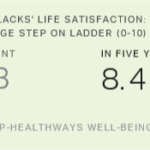News FeatureBy Eric Mack, Pacific News Service Far north in a mostly Native Alaskan town along the Yukon River, the Toshiba Corp. seeks to build a “super-safe” nuclear power plant. Residents, eager to lower costly power bills, are interested, but wary.GALENA, Alaska-Mar 25, 2004-The Nuclear Regulatory Commission hasn’t issued a permit for a new commercial nuclear power plant in the United States since the late 1980s, when the technology topped the list of energy industry taboos following the infamous meltdown of the Chernobyl reactor in the U.S.S.R. But if Japan’s Toshiba Corp. has its way, the prototype for a new generation of “micronuclear” power plants will be constructed on a remote stretch of the Yukon River in Alaska before the end of the decade. Last summer, representatives from Toshiba made the journey from Tokyo to Galena, a predominately Alaska Native village with a population of about 700. They met with community leaders to present their “4S” system, which stands for Super-Safe, Small and Simple. According to Toshiba, the 4S could cut electricity costs for the village by more than 75 percent for at least 30 years. The plant would also use water from the Yukon River to create hydrogen gas to be stored in fuel cells, one of the most talked-about forms of renewable energy in recent years. Galena serves as a hub for a handful of smaller villages along the Yukon and its tributaries. The region is made up of thousands of square miles of largely untouched boreal forest encompassing three National Wildlife Refuges, and includes some of the world’s most renowned moose habitat. Like most communities in Western Alaska, Galena is a fly-in village; there are no highways, roads, or power lines linking it to the state’s larger population centers. Large diesel generators must produce all electricity locally, using fuel delivered by a river barge during the summer months when the Yukon is ice-free. The resulting electricity costs for local residents per kilowatt-hour is nearly three times the national average, even with assistance from a state-funded subsidy program. Toshiba has pledged that the 4S prototype would be constructed at no cost to the village. Galena would have a cheap, clean-burning solution to all its energy needs for three decades, in exchange for becoming an international nuclear guinea pig. Community member Rand Rosecrans cautioned Toshiba representatives at the presentation that many residents would have strong opinions: “You say the word ‘nuclear‚’ and lots of people are going to have an automatic negative reaction.” So far, tribal and city leaders have expressed a cautious interest and desire to learn more about the idea. “Like anything new, it’s going to have to be studied pretty closely before we agree to bring it in,” Louden Village Council Chief Peter Captain told the Anchorage Daily News. In 2001, the Baker Institute for Public Policy at Rice University released working papers that examined the 4S system and three other similar reactors. The report was co-authored by Neil Brown, a Nuclear Engineer at the Lawrence Livermore National Laboratory. In a phone interview, Brown explained that besides being smaller than most reactors, the 4S is a liquid sodium-cooled reactor, not a water-cooled one. According to Brown, there are 21 sodium-cooled reactors around the world — including Japan’s MONJU reactor, which Toshiba helped construct with three other companies in the 1985. After construction delays, MONJU first went critical in 1994, but was shut down after an accidental sodium leak and fire occurred in late 1995 while operating on low power. No radiation leaked out, but community concerns have kept MONJU shut down. “MONJU has definitely not been a success,” says Paul Gunter, a reactor specialist with the Nuclear Information and Resource Service in Washington, D.C. Gunter said that experience with sodium-cooled reactors in the United States has not been much better. “The main concern (with this type of reactor) is that sodium and water have a tremendous explosive reaction. There was another near accident in Detroit at Fermi Unit One in 1966, resulting from loose parts.” But attorney Douglas Rosinski, of the Washington, D.C., firm Shaw Pittman, which represents Toshiba, says the 4S system is nothing like the infamous nuclear power plants of the past. He compares the 4S to a completely self-contained, automated “nuclear battery” with no moving parts. At the heart of the 4S system is a log-sized uranium core, which would generate power for 30 years before needing to be disposed of and replaced.
Brown said the reactor is similar to the first submarine reactors, and that Toshiba’s design includes inherent safety characteristics, making it “a low-pressure, self-cooling reactor.” Toshiba hopes to have a 4S system operational by the end of the decade, but the cost of testing and licensing the prototype to the satisfaction of the Nuclear Regulatory Commission could keep it from getting off the ground. Which is why a rural Alaska Native village with remarkably high-energy costs was chosen as an ideal site for a prototype. Rosinski and others seek to gather enough political support to secure significant funding for the project. Alaska’s senior Senator, Republican Ted Stevens, the Senate pro tempore and chair of the powerful appropriations committee, has said that he supports Toshiba’s proposal, but that it will have to first clear the hurdle of public opinion. The Department of Energy plans to send staff to the region to evaluate energy production capabilities, including the 4S. They plan to complete a report by the summer. PNS contributor Eric Mack (ericcmack@hotmail.com) is a freelance writer based in Galena, Alaska. |
||
|











